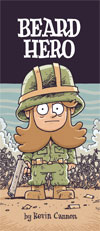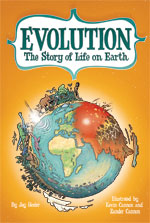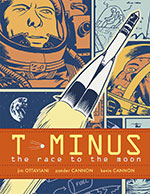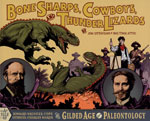One, yes, it is who you know.
Nearly all of the work that I've gotten and that we at Big Time Attic have gotten together has been through someone one of us knew, worked with previously, met at a convention, was related to, lived or worked close to, or who somehow recommended us out of all of the millions of cartoonists out there.
Two, that's not exactly that strange.
People who need work done can't be expected to have an encyclopedic knowledge of every cartoonist out there; they only typically remember at most a dozen off the top of their heads. If you know them, you instantly jump into that dozen. But you need a couple things if you want to actually do the work.
Be Ready.
Being thought of is not the same as getting the job. Everybody gets considered for jobs all the time, but the question is, are you ready for it? And almost as importantly, do other people KNOW you're ready for it? When they come to you and say, "Can you draw this many drawings in this style by this deadline?" you have to be able to honestly, and credibly, answer yes.
Deliver the Goods.
And then you have to make good on your promises. This is an important point: most of the people we work with we work with several times. So that means you have to turn in work that is good and on time, and you need to be easy to deal with. Doing this means you stay in people's heads as the right person for the job. A lot of clients out there will go with someone whose style is ALMOST right over someone whose style is JUST right if they know that person is fast, good, and easy to work with. This frequently makes the difference between working constantly and bitterly grumbling about how no one appreciates you.
Be a Known Quantity.
I always tell people that when it comes to drawing style, focus on depth rather than breadth. That is to say, rather than be able to pencil a comic in every style from scary vampires to fluffy ponies, it's better to work in a relatively narrow range (say, just humorous illustration) but be able to pencil, ink, letter, color, and, if necessary, do design and prepress work in that style. That 1) makes you jump to the top of people's minds when they think, "Who could draw this funny comic?" and 2) makes you an easy choice, since you can take care of everything from the word go.
When you can draw pretty well in every style, you have the problem of never being the best at anything (and, of course, never being KNOWN to be the best at anything). There will always be a better vampire guy or pony guy than you because that's all they do.
There's no question that literally only having one style would limit you in what jobs you can take, and so it's important to be able to have a certain range. If you do humorous stuff, you need to make sure you could do a funny superhero story or a funny vampire story or a funny fluffy pony story, all within what people recognize as your style. The main thing is that people, when they think of you, can imagine how you would draw the book. That's how you get the job.
So yes, it is who you know. But it's not some kind of old boys' network that just gives jobs to people's sons. It's about preparing your skills so that they are top notch, and then getting out there, whether it's on the internet, at comic conventions, or even at the comics store and showing people your work, so that the next time they need someone to draw something, they call you.






5 comments:
The phrase I kept trying to work into this post about being ready to do the work, but just couldn't, was:
"I also know people at 3M, but they don't call me up asking about new ways to stick stuff to stuff"
The first time I read that, I thought it said "3 AM", and it made for a really interesting phrase.
On the subject of being the best vampire artist, or the best pony artist, yes, be the best.
But part of being the best is breadth within your specialty. Sooner or later, you'll have to draw the vampire eating late night at Denny's. Or the pony going to the veterinarian with lots of medical equipment. Draw a variety of settings within your genre! Most common portfolio weakness I see among the 'almost ready.'
I certainly agree with that, Gene. To even be remotely employable, an artist needs to be able to draw anything and everything. But I see all too many people who are very talented who are underemployed because since they can draw in fifty styles, no one knows which one is actually theirs.
Actually, the advice you give is true for any area of self employment that depends on directly on what you can do. It holds for technical consulting as well as art.
Post a Comment